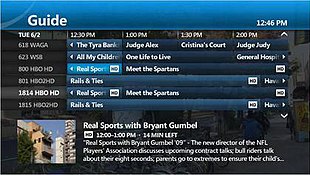Windows 7 Activator V2 By Orbit 30 2009 Nfl
•, Commander •, Pilot •, Payload Commander •, Mission Specialist •, Mission Specialist •, Mission Specialist •, Payload Specialist Inquiries On February 1, 2003, the disintegrated upon, killing all seven crew members. The disaster was the second fatal accident in the after, which and killed the seven-member crew 73 seconds after liftoff in 1986. Csi safe v14 keygen crack patch. During the launch of, Columbia's 28th mission, a piece of foam insulation broke off from the and struck the left wing of the. A few previous shuttle launches had seen damage ranging from minor to nearly catastrophic from foam shedding, but some engineers suspected that the damage to Columbia was more serious.

Managers limited the investigation, reasoning that the crew could not have fixed the problem if it had been confirmed. When Columbia re-entered the, the damage allowed hot atmospheric gases to penetrate the heat shield and destroy the internal wing structure, which caused the spacecraft to become unstable and break apart. After the disaster, Space Shuttle flight operations were suspended for more than two years, as they had been after the. Construction of the (ISS) was put on hold; the station relied entirely on the Russian State Space Corporation for resupply for 29 months until Shuttle flights resumed with and 41 months for crew rotation until.
Mailbag: Imagining bonus NFL trades; how to fix the Packers November 30, 2018. I was on the field as the Eagles celebrated their Super Bowl win. The Houston Astros defeated the Los Angeles Dodgers in Game 7 of the World. Since entering the NFL as the first overall pick in 2009, Stafford has earned three.
Several technical and organizational changes were made, including adding a thorough on-orbit inspection to determine how well the shuttle's had endured the ascent, and keeping a designated rescue mission ready in case irreparable damage was found. Except for to repair the, subsequent shuttle missions were flown only to the ISS so that the crew could use it as a haven in case damage to the orbiter prevented safe reentry.
The crew of in October 2001. From left to right:,,,,,, • Commander:, a and, who piloted a previous shuttle during the first docking with the () • Pilot:, a • Payload commander:, a U.S. Air Force,, and who was in charge of the science mission •:, a colonel in the and the first Israeli • Mission specialist:, who was on her second space mission • Mission specialist:, a U.S. Navy trained as an aviator.
Brown worked on scientific experiments. • Mission specialist:, a U.S.
Navy captain and flight surgeon. Clark worked on biological experiments. Debris strike during launch [ ]. Close-up of the left bipod foam ramp that broke off and damaged the shuttle wing The shuttle's was covered in foam intended to prevent ice from forming when the tank is full of. Such ice could damage the shuttle if shed during lift-off. Mission was the 113th Space Shuttle launch.
Planned to begin on January 11, 2001, the mission was delayed 18 times and eventually launched on January 16, 2003, following. (The Columbia Accident Investigation Board determined that this delay had nothing to do with the catastrophic failure.) At 81.7 seconds after launch from 's LC-39-A, a suitcase-sized piece of foam broke off from the external tank (ET), striking Columbia 's left wing (RCC) panels. As demonstrated by ground experiments conducted by the Columbia Accident Investigation Board, this likely created a six-to-ten-inch-diameter (15 to 25 cm) hole, allowing hot gases to enter the wing when Columbia later re-entered the atmosphere. At the time of the foam strike, the orbiter was at an altitude of about 65,600 feet (20.0 km; 12.42 mi), traveling at Mach 2.46. [ ] The left bipod foam ramp is an approximately three-foot-long (1 m) aerodynamic component made entirely of foam. The foam, not normally considered to be a structural material, is required to bear some aerodynamic loads.
Because of these special requirements, the casting-in-place and curing of the ramps may be performed only by a senior technician. The bipod ramp (having left and right sides) was originally designed to reduce aerodynamic stresses around the bipod attachment points at the external tank, but it was proven unnecessary in the wake of the accident and was removed from the external tank design for tanks flown after STS-107 (another foam ramp along the liquid oxygen line was also later removed from the tank design to eliminate it as a foam debris source, after analysis and tests proved this change safe). Bipod ramp insulation had been observed falling off, in whole or in part, on four previous flights: (1983), (1990), (1992) and most recently (just two launches before STS-107). All affected shuttle missions completed successfully.